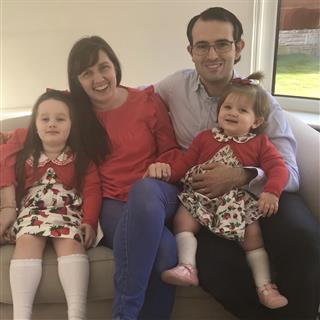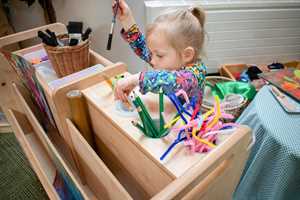Children's Health
Developing Gross Motor Skills through play!
Gross motor skills involve whole body movements and coordination of large body parts. Development in skills, allows us to perform everyday functions such as sitting, standing, walking, running, climbing and jumping.
From an early age, babies begin to develop their gross motor skills by learning to lift their head, sit without support, crawl and then take their first steps.
.jpg)
By the age of two children can usually run, jump, throw a ball and ride on push toys.
Gross motor skills are mastered before fine motor skills which require control and dexterity in the hands and fingers.
Gross motor actions are built upon and enhanced through sensory experience, free play and when given time and space to practise. We continue to refine our gross motor skills even into adulthood.
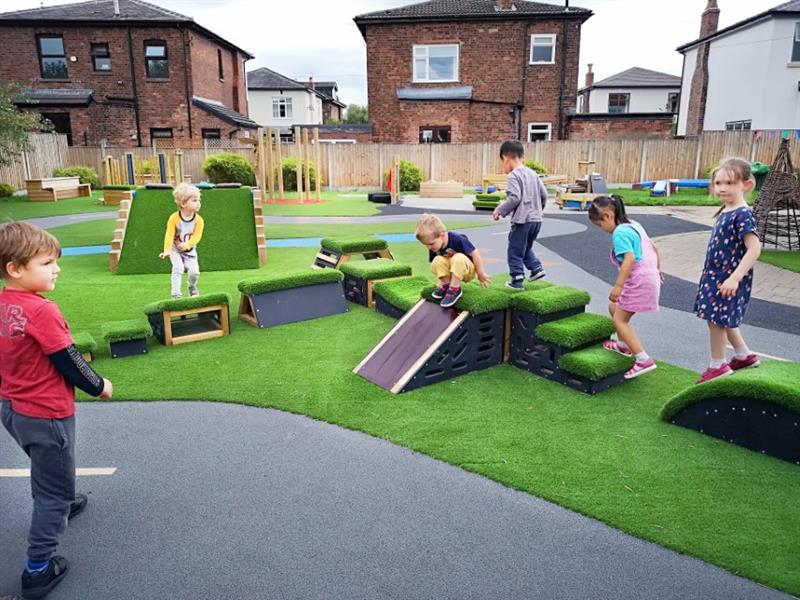
When children first learn to walk there are many stages that they go through. At first, they usually require two hand support or a push along toy.
They may then require one hand support before they can walk independently. With plenty of practise and opportunities children will improve their balance and walk for longer distances.
Over time, the act of walking becomes less of a conscious act and less effort is needed but this does not mean that the skill is completely mastered.
Once walking become steadier, children can be given opportunities to travel across different surfaces. The outdoor environment is the perfect place for developing muscle strength by travelling across grass, bark, pavements or sand.
When spending time outdoors, children will need to conquer different obstacles and vary their movement according to the terrain. Moving on uneven surfaces can develop balance, core stability and helps with arch development in children’s feet.
.jpg)
Building Muscular Strength
Children develop strength when they are given opportunities to use large muscle groups daily, in a variety of ways.
Babies build strength in their neck muscles by being placed on their tummies which helps to develop curiosity in their surroundings.
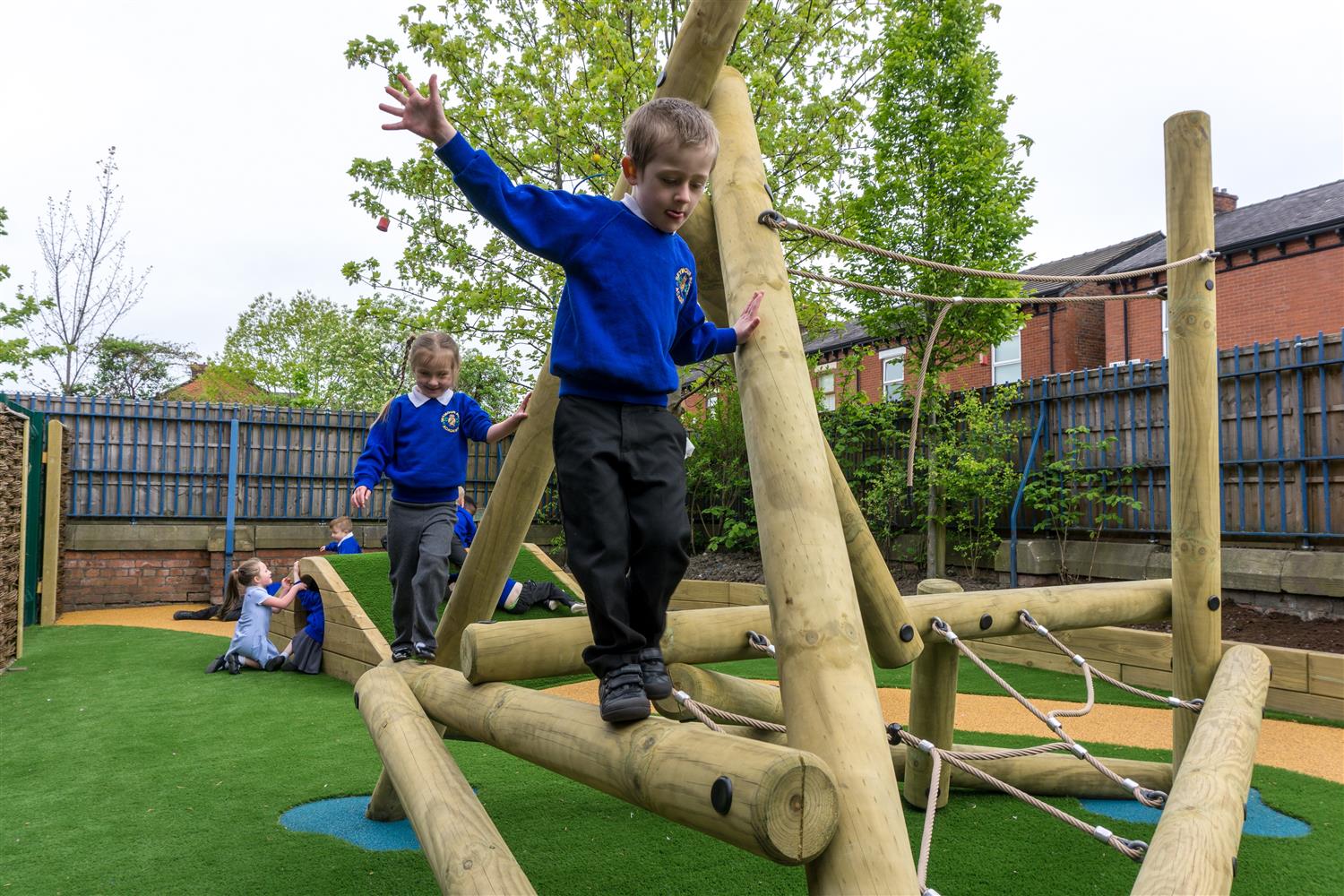
Each time babies lift their heads they learn to coordinate head and eye movements, allowing them to view more of their environment. Babies begin to reach for toys and use their muscles to roll over, to view their world from a different perspective.
As children get older their desire to move and explore their environment grows. They may climb to the top of the net to get a better view, slide down to reach their friends or crawl across the grass to inspect the flowers.
NHS guidelines suggest that toddlers and pre-schoolers should be active for three hours a day, taking part in a variety of physical activities.
It is important that children are encouraged to run, jump, roll, walk, hang, crawl and climb in order to engage large muscle groups leading to accurate and efficient body movements.
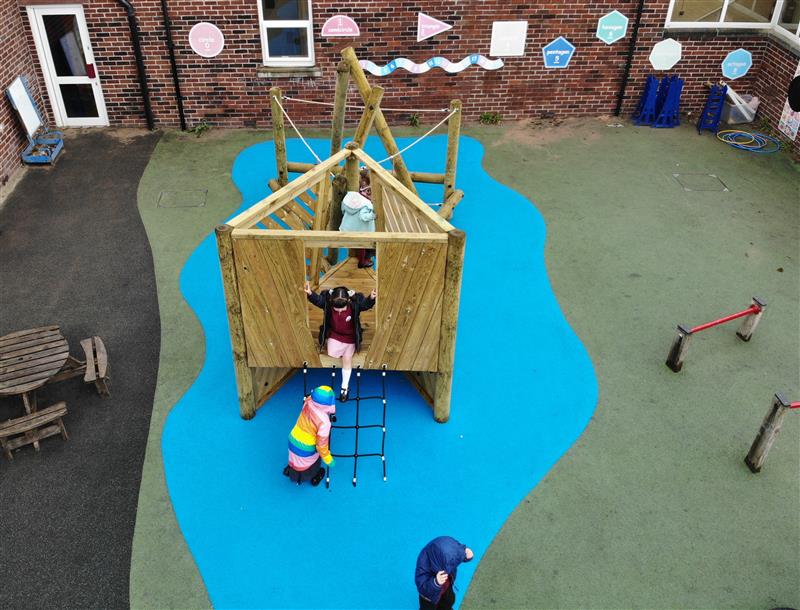
Core and Upper Body Strength
Core strength involves natural alignment of the spine and control of the core torso muscles. The core is the centre of control for actions performed by the lower and upper body. A strong, flexible, naturally aligned spine allows the skeleton to maintain good posture and ease of movement.
Children with poor core strength will tend to slump with shoulders rolled forwards while seated, they have poor endurance and may find balance difficult.
It can be tricky to perform coordinated movements on both sides of the body, sit up straight in a chair, control scissors or jump if you don’t have a strong core.
Free play, especially outdoors, allows children to develop core strength as they climb up the playframe, roll down the hill, ride their trike around the course and swing from the ropes.
Climbing is a whole-body activity which requires children to engage their core to provide support and stability. Legs are used to push and arms are used to pull and gain height requiring children to adjust their bodies and develop a stable core.
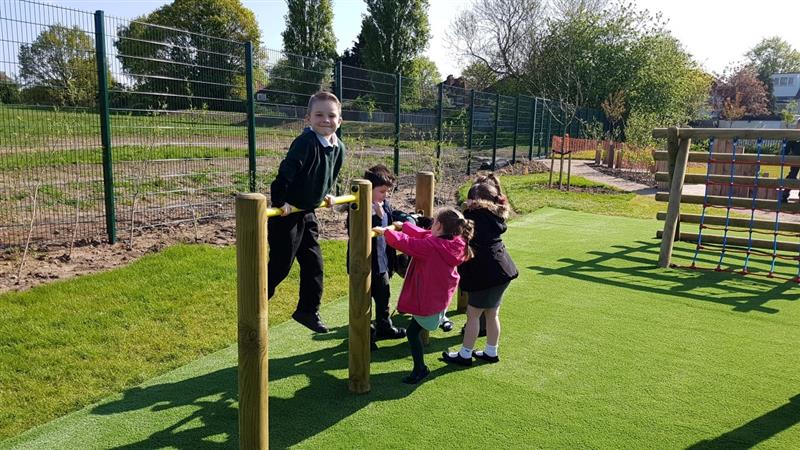
Upper body strength refers to the muscles in the arms, chest, back and shoulders. Developing good upper body strength is important for mobility and fine motor skills. Children show better control when using their hands to write and manipulate objects if they have developed adequate strength and stability in the shoulders and arms.
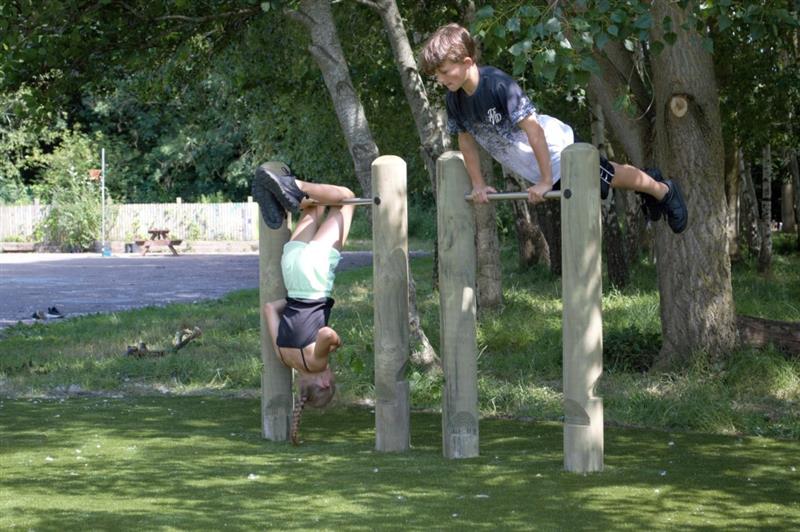
Roll Over Bars allow children to pull up and hold their own weight whilst also using momentum to swing from bar to bar. The use of monkey bars refines and strengthens shoulder muscles.
The Rockies is great for helping children work on their core strength as they use the Rocker block to work their muscles and balancing skills. The wobble board included in the set can help children improve their coordination and gross motor skills too.
A Daily Mile Track would be a useful space to practise wheelbarrow walking with friends or animal walks such as crab walks, bear walks, frog jumps and donkey kicks which help to strengthen muscles.
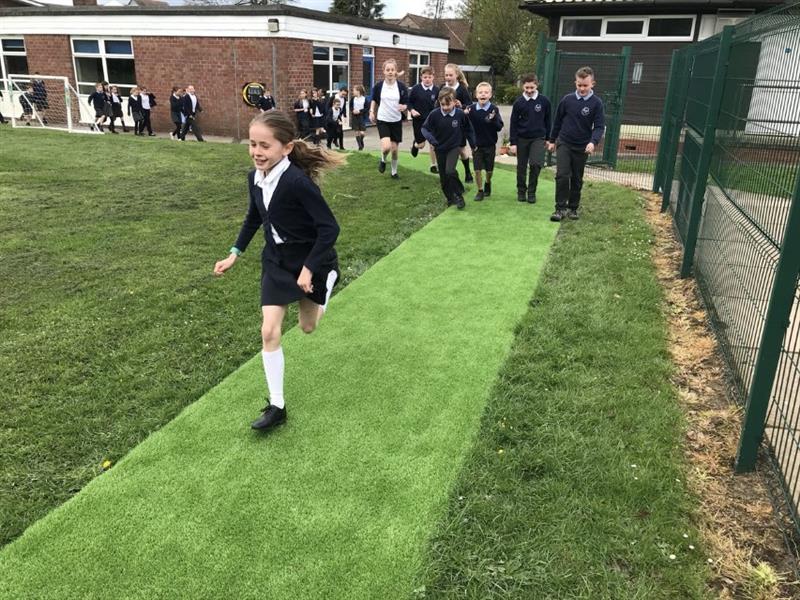
Postural Stability and Control
If postural control and core stability are weak, our muscles may find it difficult to hold our body upright and we can develop a slouched posture.
Children may find it more difficult to sit upright, walk, jump, skip or climb without becoming tired or being prone to trips and falls. Children with poor postural stability may also find everyday, functional activities problematic such as dressing, writing or cycling.

Developing postural control is an important step for babies when reaching developmental milestones.
Babies begin to develop control by learning to lift their head up.
Product Spotlight
Following this, tummy time activities allow babies to develop the strength to push up using their hands and begin to crawl. Crawling is an important stage when children’s shoulders and hips become stronger in preparation for walking and using arms and hands for reaching and supporting.
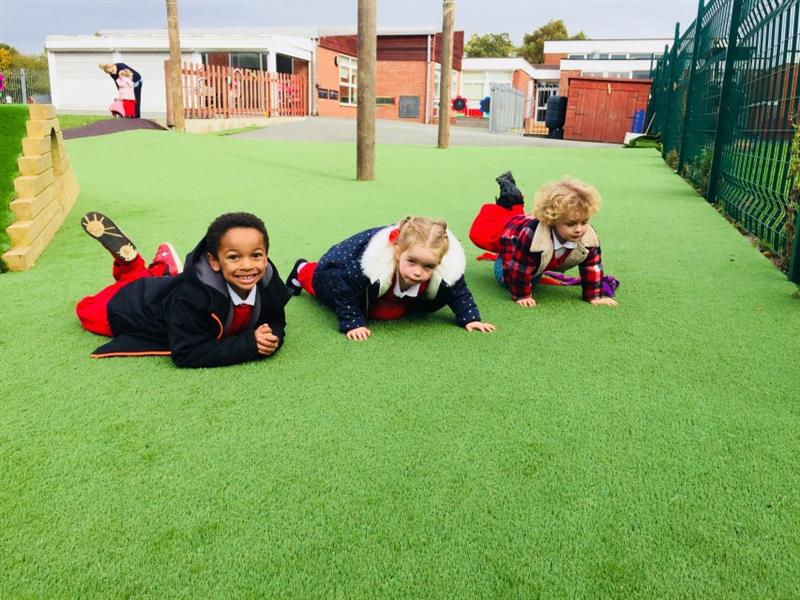
Children can develop and strengthen postural control by engaging in play that works against the forces of gravity.
Swinging, climbing, completing the monkey bars, pulling themselves along and rolling up and down a hill are all play experiences that help to develop postural stability.
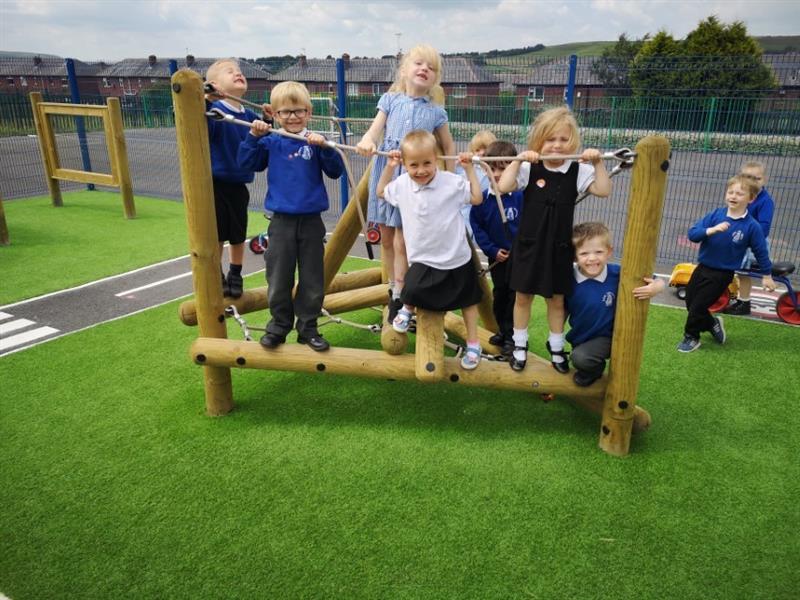
When children are restricted in seated positions for long periods of time it is hard for them to develop adequate strength and control.
Pupils who lack postural control may be more likely to fall off their seat in school or need to lean on the table for support when seated. It is important for children to experience frequent play opportunities that challenge them to move their bodies against the forces of gravity.
Developing Stamina
Stamina is defined as the ability to demonstrate sustained effort without physical fatigue. Endurance develops gradually as children exercise through both structured and unstructured activities.

Having good endurance is important as children can play for sustained periods without needing to stop for breaks. Regular active play involving running around the track, jumping off the climber and scrambling to the top of the net helps to develop a child’s cardiovascular system.
Endurance can be built upon by providing children with opportunities to improve and maintain strength. Pulling on the ropes of the Materials Mover, digging in the sand pit, and climbing up the wall allow children to play whilst improving their overall strength and fitness.
Crossing the Midline
Crossing the midline means that one hand spontaneously moves over to the other side of the body to work there. When children do this, they are using both sides of the brain to coordinate smooth, controlled, complex movements.
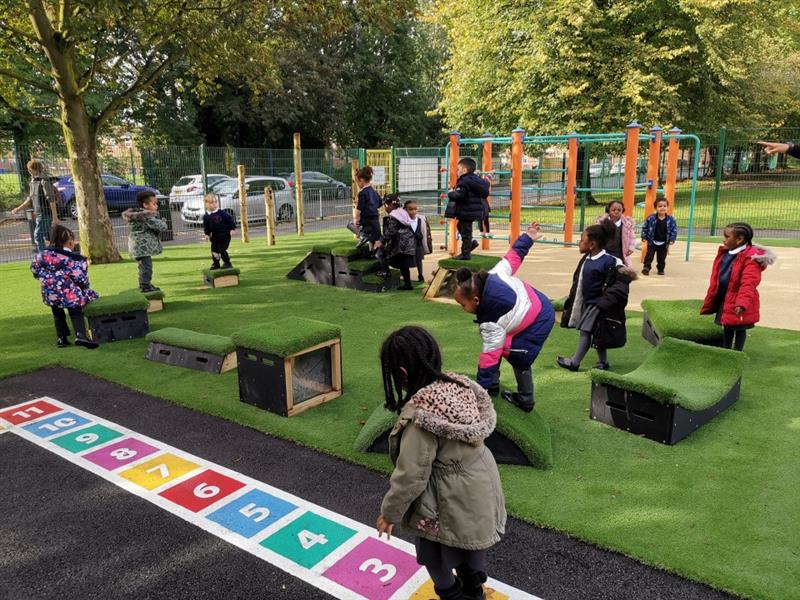
Before this skill is mastered, young children may use the left hand on the left side of the body and the right hand on the right side of the body. Crossing the midline is the ability to use each limb/eye on both sides of the body.
This skill is important to be able to write and read from left to right, to establish a dominant hand and to be able to take part in gross motor activities such as bat and ball games.
If children develop problems when crossing the midline, they may swap hands when doing certain activities such as drawing and painting, they may rotate their body rather than reaching across the imaginary midline and they could have difficulty with complex gross motor skills such as star jumps and skipping.
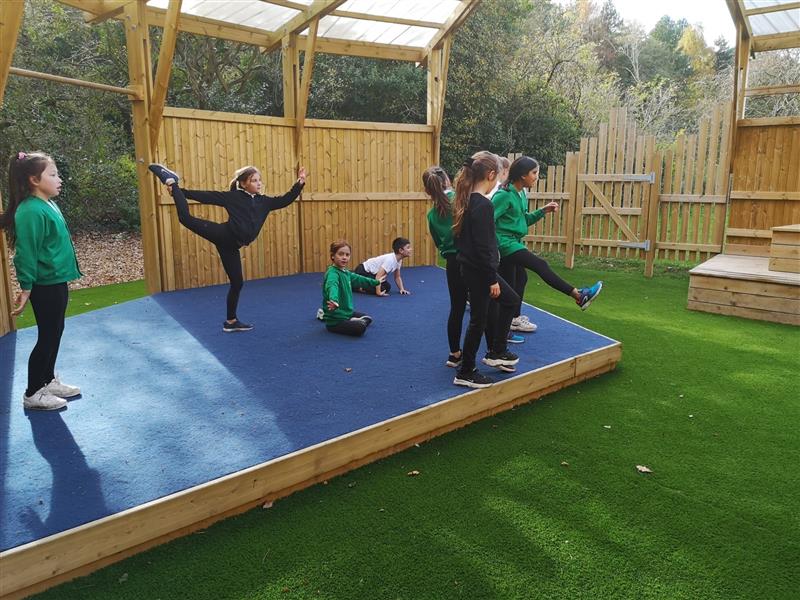
Helping children to strengthen their core by practising yoga, performing rhymes such as ‘Row, row row your boat’ and riding balance bikes can help with crossing the midline.
Playing musical instruments, drawing, painting and weaving on a large surface can help to develop midline crossing.
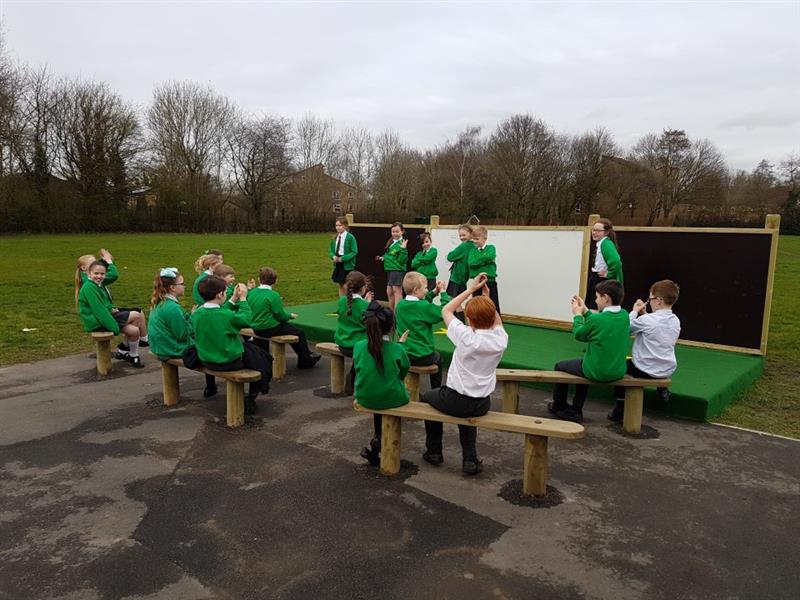
The Vestibular Sense
The vestibular sense is also known as our balance sense. When we move our body and head in different directions, fluid in the inner ear moves back and forth stimulating little hairs inside our inner ear.
Specialised cells send signals to our brain which then informs our body’s reaction allowing us to navigate our environment with ease and control.
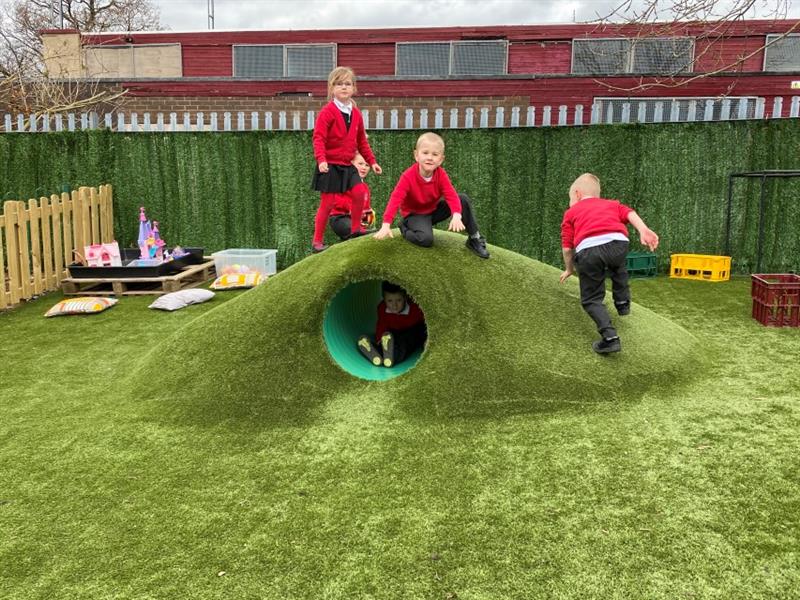
Balance is essential for movement, without it we would not be able to roll over, sit up or walk. We rely on feedback from our inner ear to make sure we don’t fall over if the ground is uneven or there are steps.
Children with a poorly functioning vestibular sense may move slowly or cautiously and fall frequently. They can run into things and trip often, sometimes preferring sedentary activities.
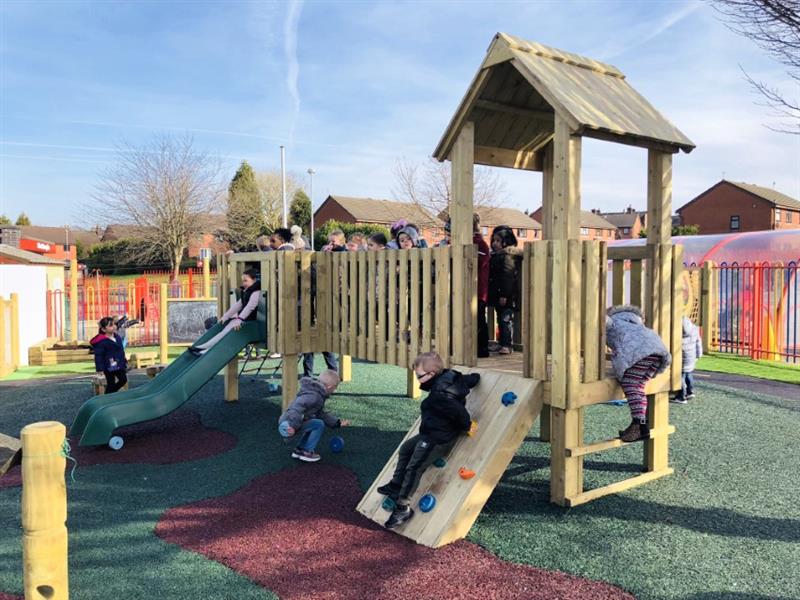
Children can develop a strong vestibular sense by having frequent opportunities to move. Walking and running offer some vestibular work but activities that encourage children out of an upright position, involving moving the head into different places, provides rapid input to the inner ear. Children benefit from swinging, hanging upside down from equipment, spinning and tumbling.
Gross motor skills are vital for major body movement, including the skills needed for play, sports and fitness.
Gross motor development impacts everyday functions such as walking and self-care skills. All children develop at different rates and there may be considerable individual differences when it comes to gross motor skill development and growth.
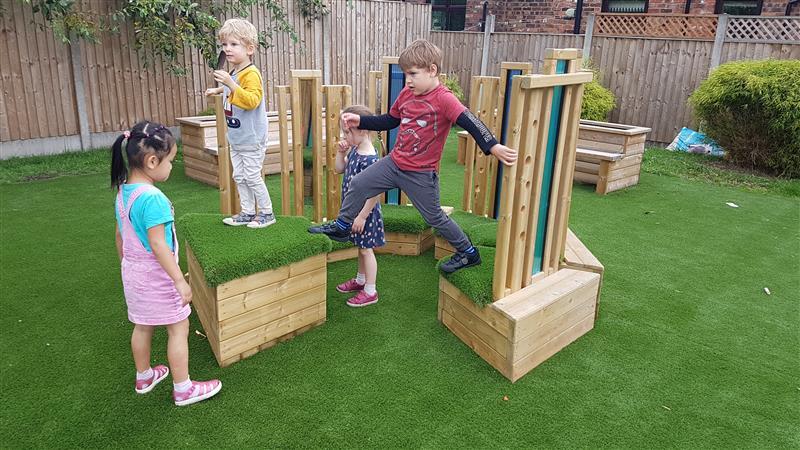
As practitioners it is important that we provide opportunities for children to become confident, agile and strong. Pupils will develop positive attitudes to physical play and fitness if we promote the joy of movement.
Children continue to refine their gross motor skills through practise. If learners are given the opportunity to climb a couple of times a year, they are likely to feel inexperienced and stay fairly close to the ground.
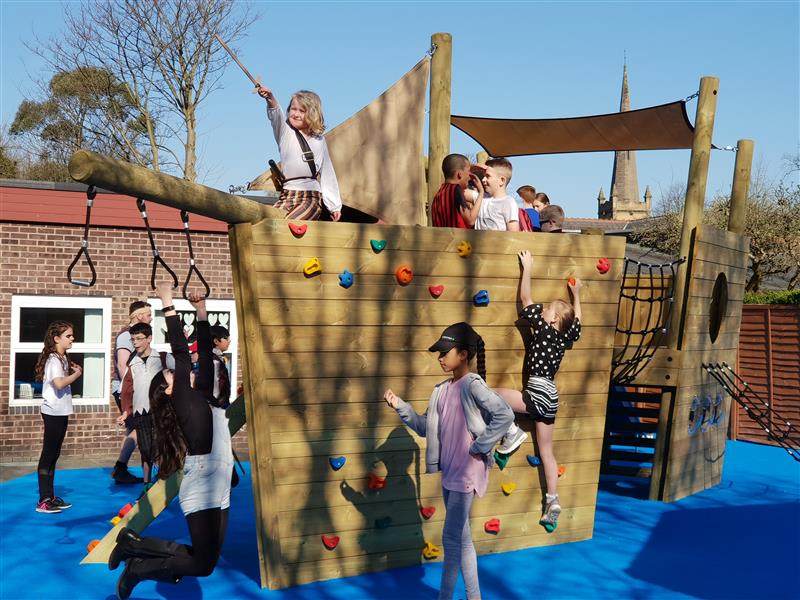
However, if children are able to climb, roll, swing and jump on a regular basis by having a selection of well-chosen playground equipment available to them each day, their confidence will soar. Children will develop their muscles and the coordination needed to be expert climbers.
The outdoor environment gives children the freedom to develop their gross motor skills. It is worth considering how your learning space caters for children’s gross motor skills.
Are children given plenty of opportunity to hop, creep, spin, pull and push? Can they revisit equipment regularly in order to become familiar and confident?
Pentagon Play can make a huge difference to development by creating a safe yet challenging playspace that will ensure children are physically active outdoors.
If you would like to read the first blog in this two-part series on Motor Skills, then find our Fine Motor Skill Development Blog Here!




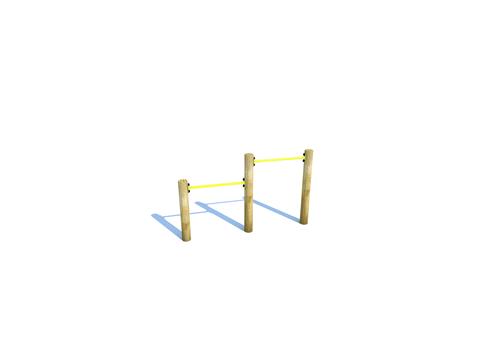
.jpg)

